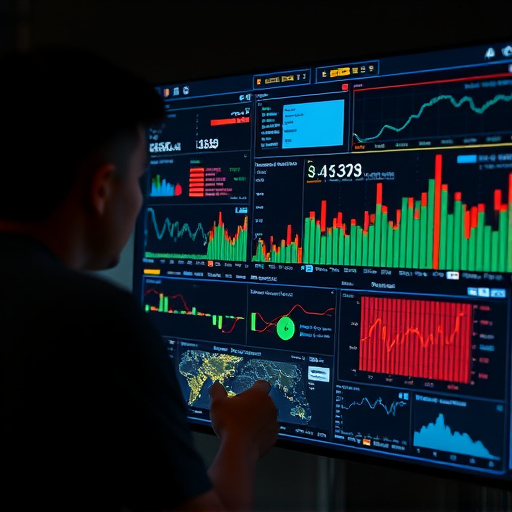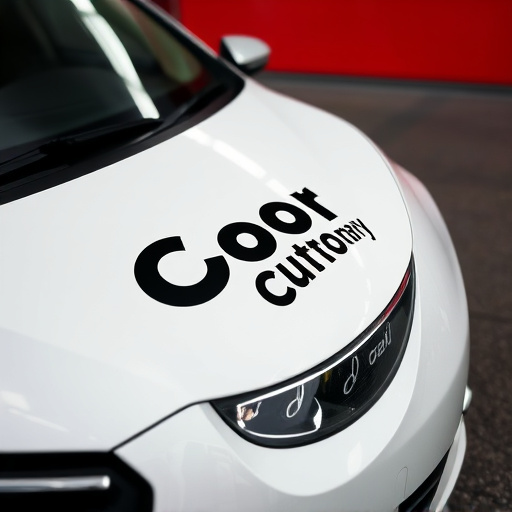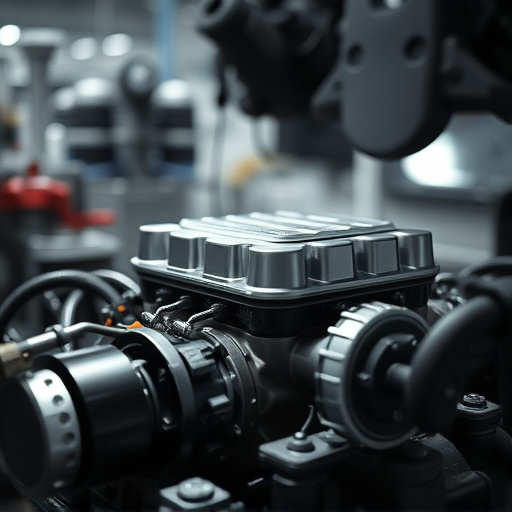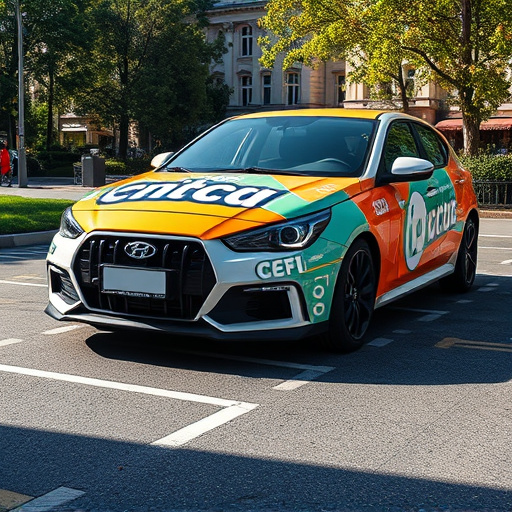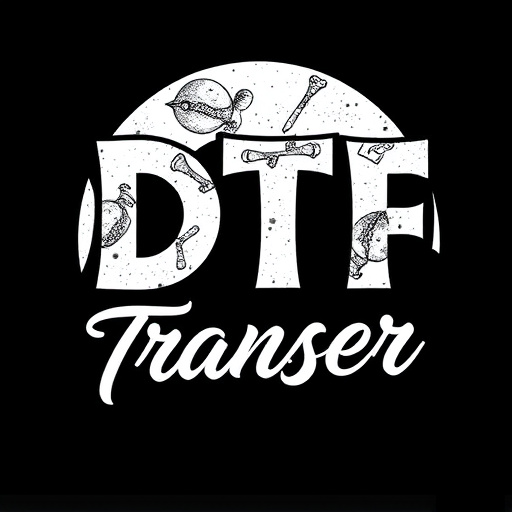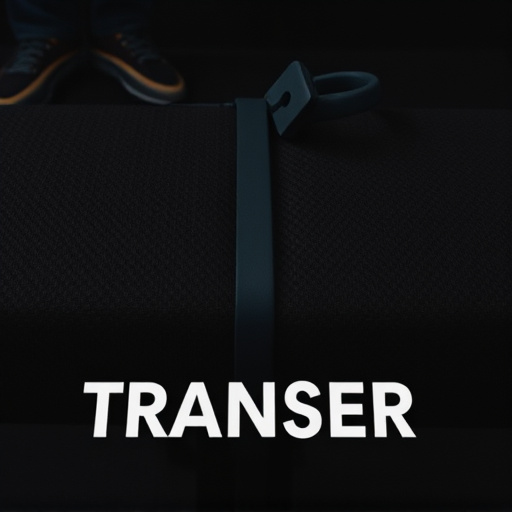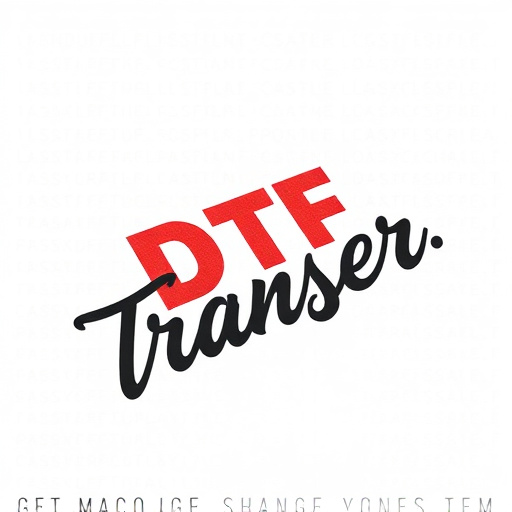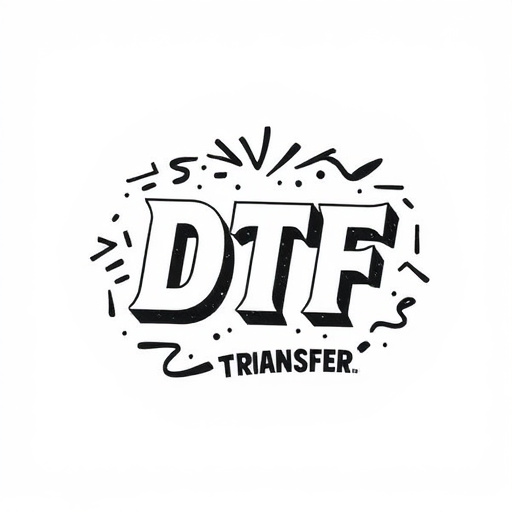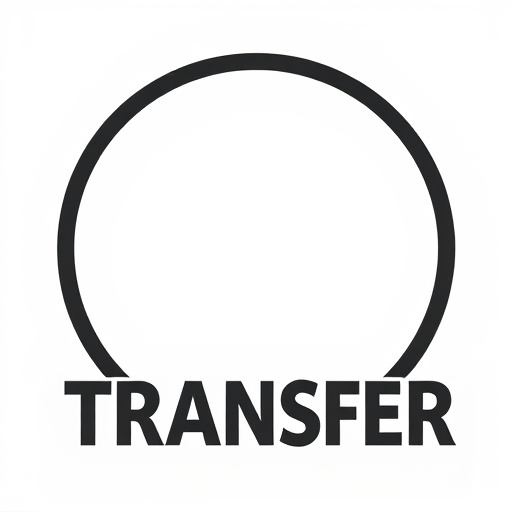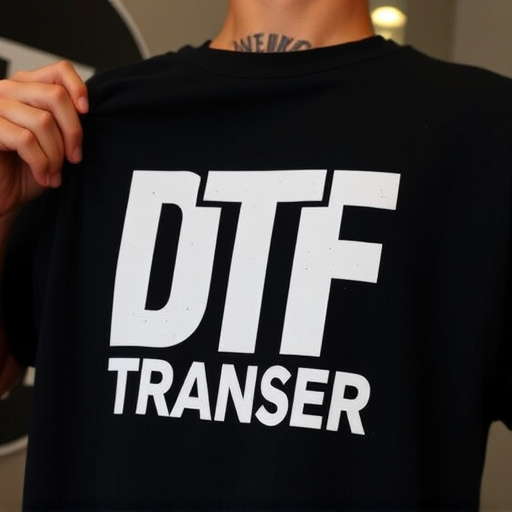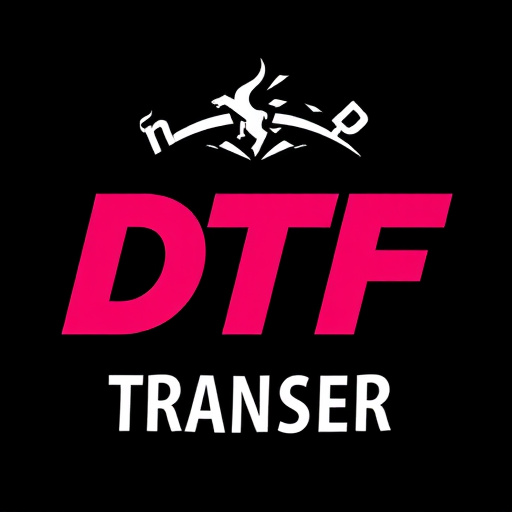DTF Printing (Direct-to-Film) is a cutting-edge vinyl signage technology that delivers precise, detailed graphics on various materials, including heat transfer vinyl (HTV). This method uses specialized printers to deposit pigment directly onto substrates, forming strong bonds. Ideal for vehicle wraps and window graphics, DTF offers high-quality, long-lasting results. HTV, another customization technique, transfers ink from a film or sheet using heat and pressure, ensuring durability and vibrant colors. While DTF excels in intricate designs and outdoor applications, HTV is versatile for diverse materials like cotton and polyester. Each method has unique strengths, financial considerations, and environmental impacts, making them suitable for different projects based on specific needs and budget constraints.
“Direct-to-film (DTF) printing and heat transfer vinyl are two prominent methods for creating custom designs on various surfaces. This article offers a comprehensive comparison, delving into the intricacies of each technique. From understanding the fundamentals of DTF Printing to exploring the traditional yet versatile heat transfer vinyl method, we analyze quality, durability, design flexibility, cost-effectiveness, and environmental considerations. By the end, readers will grasp which method best suits their needs in terms of DTF printing.”
- Understanding Direct-to-Film (DTF) Printing: A Comprehensive Overview
- Heat Transfer Vinyl: The Traditional Method and Its Advantages
- Comparison of Quality and Durability: DTF vs Heat Transfer Vinyl
- Design Flexibility and Customization: Which Offers More Options?
- Cost Analysis: Evaluating the Financial Implications of Each Method
- Environmental Impact: Sustainability in DTF Printing versus Heat Transfer Vinyl
Understanding Direct-to-Film (DTF) Printing: A Comprehensive Overview
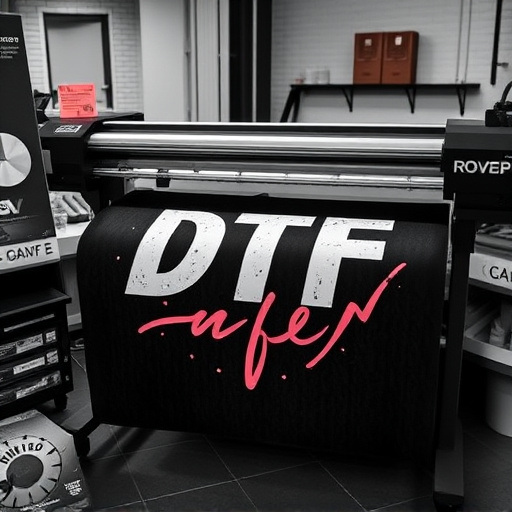
Direct-to-Film (DTF) printing is a cutting-edge application that has revolutionized the way we create and apply graphics, particularly in the field of vinyl signage. This innovative process eliminates the need for traditional methods by transferring designs directly onto various materials, including heat transfer vinyl. DTF Printing offers unparalleled precision and detail, ensuring that intricate patterns and complex images are reproduced with remarkable accuracy.
The method involves using specialized printers that deposit pigment directly onto the substrate, creating a direct bond between the design and the material. This approach allows for a vast array of possibilities, from customizing vehicle wraps to designing eye-catching window graphics. With DTF Printing, businesses can achieve high-quality, long-lasting results, making it an attractive option for professionals in the printing and design industries.
Heat Transfer Vinyl: The Traditional Method and Its Advantages
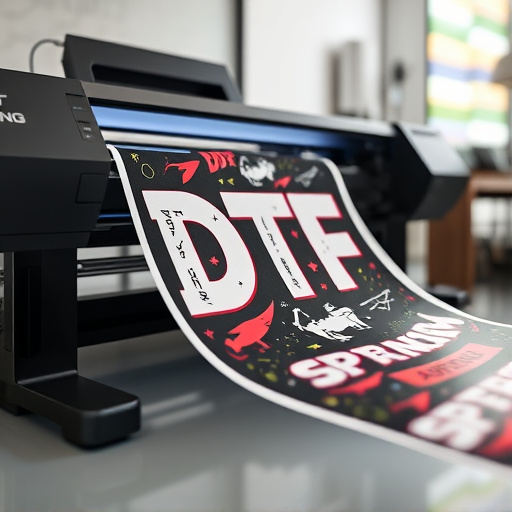
Heat Transfer Vinyl (HTV) is a traditional method for applying graphics and designs to various surfaces, especially in the clothing industry. This process involves transferring ink from a film or sheet onto a substrate through heat and pressure. DTF Printing, as it’s often called, offers several advantages. Firstly, it allows for intricate and detailed designs, making it perfect for creating complex patterns and logos. The precision of this method ensures that each element of the design is precisely placed, resulting in high-quality and visually appealing outcomes.
Additionally, HTV provides a durable finish, as the ink is bonded directly to the material’s surface. This makes the applied graphics resistant to fading, peeling, or cracking over time. It’s no wonder this technique has been a go-to for screen printing on textiles, offering a cost-effective alternative while maintaining excellent print quality and longevity.
Comparison of Quality and Durability: DTF vs Heat Transfer Vinyl
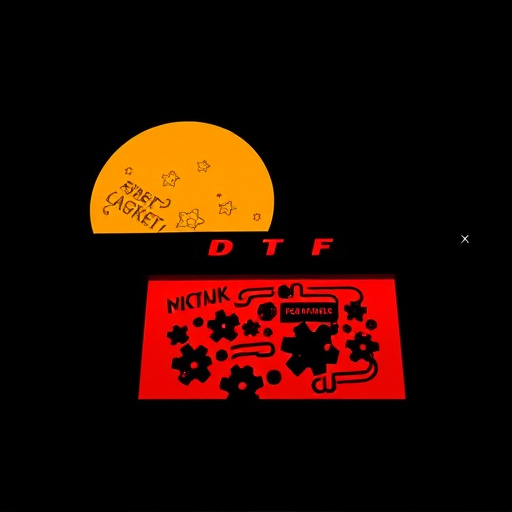
Direct-to-film (DTF) printing and heat transfer vinyl (HTV) are two distinct methods with unique advantages in terms of quality and durability. DTF technology directly prints ink onto the final substrate, offering a seamless, high-resolution finish. This method is particularly advantageous for complex designs and intricate details as it can capture subtle elements without the need for layering. The result is often a vibrant, long-lasting image that is resistant to fading and maintains its integrity over time, making DTF ideal for outdoor signage, banners, and durable goods.
On the other hand, heat transfer vinyl involves applying vinyl film to a substrate through heat and pressure, with designs sandwiched between the two. This process provides excellent versatility in terms of material choice and allows for the use of various fabrics or surfaces. While HTV may not match DTF’s resolution, it excels in durability, especially when applied to cotton or polyester materials. The vinyl layer creates a protective barrier, making it suitable for items that require frequent washing or prolonged outdoor exposure.
Design Flexibility and Customization: Which Offers More Options?
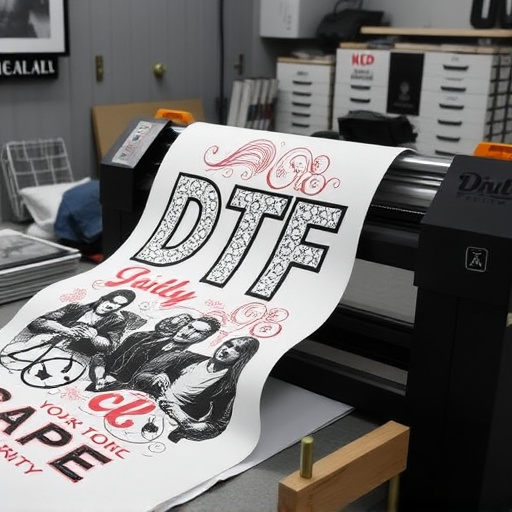
Direct-to-film (DTF) printing offers unparalleled design flexibility and customization options, especially for complex or intricate patterns. With this method, designers can create detailed, photo-realistic images directly on various materials, allowing for a vast array of creative possibilities. It is particularly favored in industries like fashion, where unique and personalized designs are in high demand. DTF printing enables the reproduction of fine lines, vibrant colors, and subtle gradients, making it ideal for intricate artwork.
On the other hand, heat transfer vinyl (HTV) also provides customization but within a different scope. While it excels in producing sharp text and simple graphics, it may not capture the same level of detail as DTF printing. However, HTV offers a wide range of material options, allowing users to choose from various colors, finishes, and even combine different types of vinyl for multi-colored designs. This makes it attractive for creating custom logos, merchandise, and decorative items with specific themes or brand identities.
Cost Analysis: Evaluating the Financial Implications of Each Method
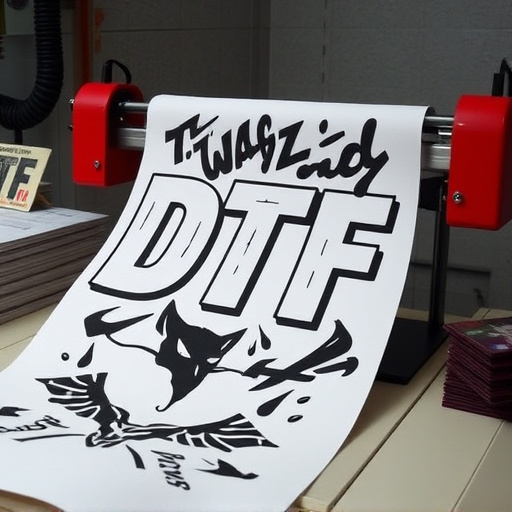
Direct-to-film (DTF) printing and heat transfer vinyl (HTV) applications offer distinct approaches to customization, each with its financial nuances. When conducting a cost analysis, DTF Printing stands out due to its efficiency in eliminating intermediate steps, reducing waste, and streamlining production. This results in lower material costs per unit, making it particularly advantageous for bulk orders or high-volume printing requirements. However, the upfront investment in specialized equipment can be significant, potentially impacting overall expenses for smaller businesses or startups.
On the other hand, HTV applications, while requiring additional steps like cutting and pressing, offer a cost-effective solution for intricate designs with vibrant colors and fine details. The versatility of heat transfer vinyl allows for a wide range of materials to be used, catering to diverse customer preferences. Nevertheless, the multi-step process can increase labor costs and lead times, making it less suitable for urgent or low-volume orders. Balancing these factors is essential in determining which method aligns best with specific project demands and budget constraints.
Environmental Impact: Sustainability in DTF Printing versus Heat Transfer Vinyl
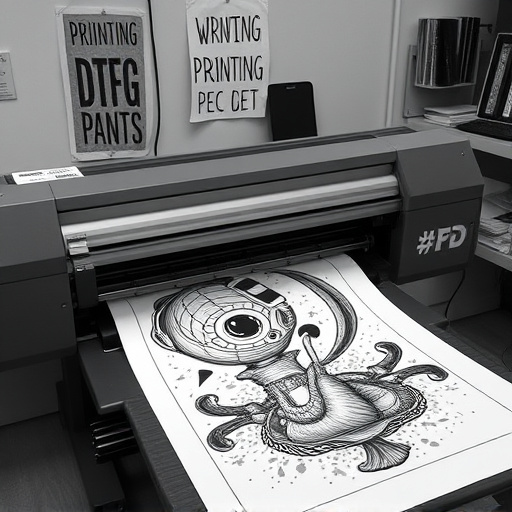
Direct-to-film (DTF) printing and heat transfer vinyl (HTV) applications offer distinct approaches to custom apparel decoration, each with its own environmental implications. In terms of sustainability, DTF Printing stands out as a more eco-friendly option. Unlike HTV, which involves transferring printed designs onto fabric using heat and pressure, DTF directly prints onto the garment’s surface, minimizing waste and the need for intermediate materials. This process reduces water consumption and eliminates the emission of volatile organic compounds (VOCs) commonly associated with heat transfer methods.
Moreover, DTF Printing allows for more precise color reproduction and higher resolution, leading to longer-lasting prints that resist fading and peeling. This longevity not only saves resources by reducing the need for frequent reprints but also contributes to a overall more sustainable production cycle. In contrast, HTV often requires multiple layers of vinyl and inks, increasing material usage and potential environmental impact over time.



